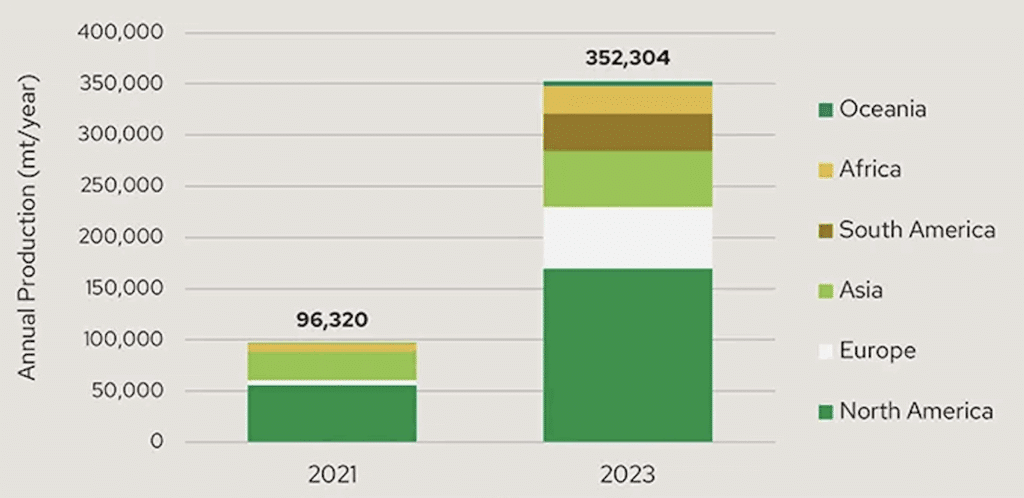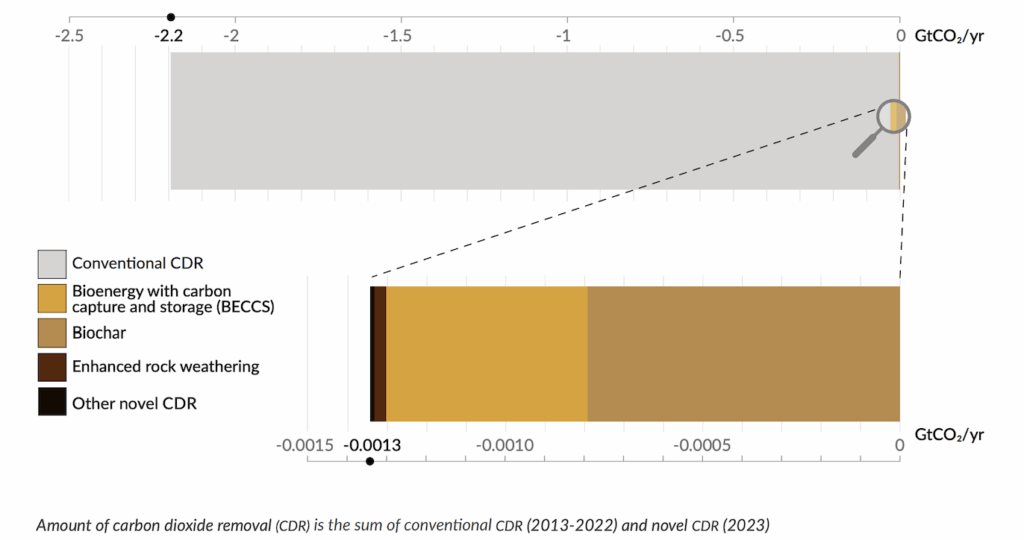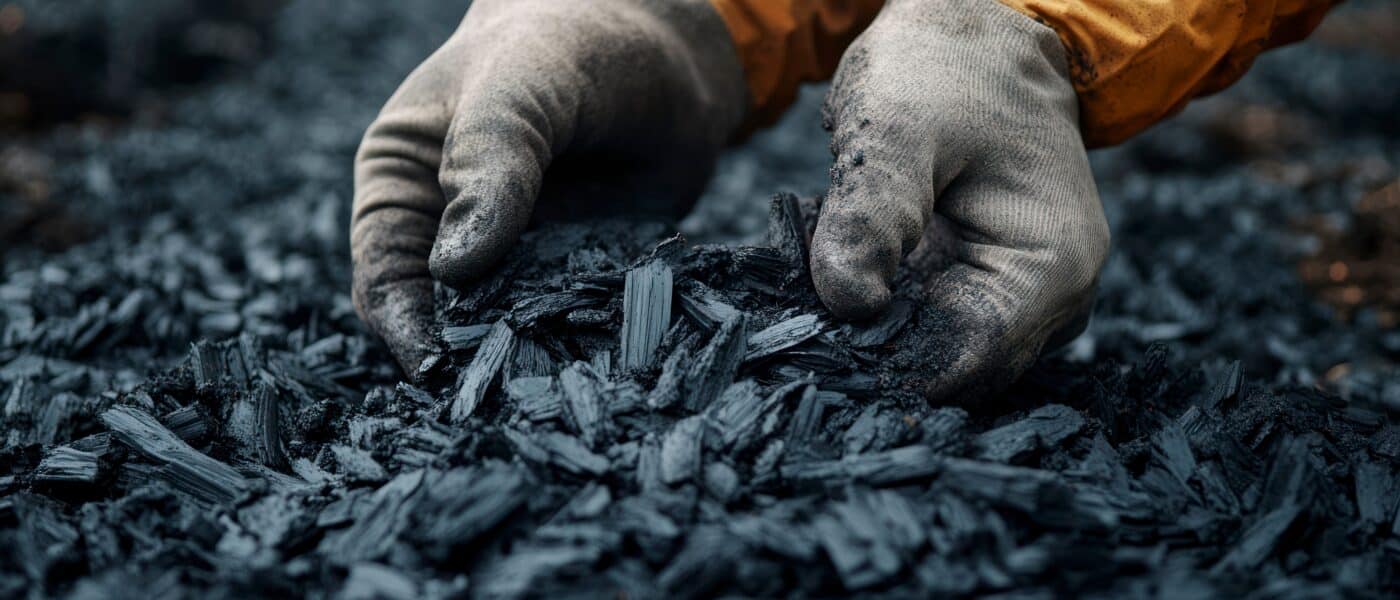Scientists are clear, as shown in the 6th Synthesis Report of the Intergovernmental Panel on Climate Change (IPCC)1: “The deployment of carbon dioxide (CO2) removal techniques is inevitable to offset greenhouse gas emissions that are difficult to eliminate, and thus achieve carbon neutrality.” By capturing CO2 from the atmosphere and storing it permanently in the soil, oceans or materials, these techniques are the ultimate lever to be mobilised to mitigate climate change linked to human activities. Some are already in use, such as reforestation, agroforestry and wetland restoration, while others are still being developed. Although not yet widely used, biochar is one of these emerging and very promising storage solutions for mitigating climate change.
A material with great potential
Biochar is a material with a high carbon content. It is produced by heating organic matter to between 300 and 700°C in an oxygen-free environment, a process known as pyrolysis. “We recycle waste such as crop and forestry residues, agri-food waste, sewage treatment plant residues, etc.” explains David Houben. The pyrolysis process produces biochar (a type of charcoal), oil and gas. In the Amazon, pre-Columbian civilisations were already using it over 1,000 years ago to improve the quality of their soil thanks to biochar’s ability to retain nutrients.
According to the most recent data2, more than 350,000 tonnes of biochar were produced worldwide in 2023 (figure 1) – half of which was in North America, compared to less than 100,000 tonnes in 2021.

What is the benefit in the face of climate change? “Transforming biomass into biochar stabilises some of the carbon it contains, preventing it from being released into the atmosphere,” replies David Houben. As they grow, plants capture CO2 and convert it into organic matter through photosynthesis. When they die, the organic matter is broken down by microorganisms in the soil, releasing carbon in the form of gas (CO2) into the atmosphere. Conversely, by transforming plants into biochar, most of the carbon is trapped for a very long time. “Microorganisms do not have the enzymes to break down the carbon chains in biochar,” explains David Houben. “As a result, biochar is hardly degraded, and the carbon remains stored in it in a stable form.” If biochar is produced locally, each tonne contains between 2.5 and 3 tonnes of CO2 equivalent, a metric that estimates the amount of greenhouse gas that would otherwise have been released into the atmosphere.
But that’s not all: biochar has other impacts on the carbon cycle3. When the gas produced during pyrolysis is used as energy, it reduces the use of fossil fuels and therefore avoids additional CO2 emissions into the atmosphere. Added to soil, biochar can improve plant growth – and therefore their CO2 storage capacity – and reduce the use of synthetic fertilisers. Biochar is one of the new methods of carbon storage, with conventional methods including agroforestry and reforestation. To date, of the 2 billion tonnes of CO2 captured each year, less than 1% is captured using new storage methods4 (figure 2). Biochar is the most widespread, with around 790,000 tonnes of CO2 stored in this form each year. According to the scenarios in the State of Carbon Dioxide Removal report, these new storage technologies will need to exceed 1 billion tonnes of CO2 per year by 2050 in order to achieve carbon neutrality.

The limitations of biochar in combating global warming
Is biochar the perfect solution for the climate? “Biochar is one solution among many for achieving carbon neutrality, but its potential has certain limitations,” cautions David Houben. Firstly, sufficient raw material deposits must be available, sometimes to the detriment of other recovery methods such as methanisation or the production of biomaterials. To date, most biochar is produced from forestry residues in North America, Europe, South America and Oceania. Asia and Africa recover a greater quantity of agricultural residues5. “It is also important to produce and use it locally, otherwise there is a risk of increasing its carbon footprint and thus reducing its benefits,” adds David Houben. “Finally, it is not feasible in every part of the world.”
This last point is crucial. The economic value of biochar is based on the carbon credits that its production can generate, but also on its ability to improve agricultural yields. However, this effect has been demonstrated in tropical areas (average yield increase of 25%), but not in temperate regions6. “Biochar has a good capacity to retain water, another interesting asset for agriculture,” points out David Houben. “But research is still being conducted to assess the extent to which this water trapped in biochar is available to plants.”
The variability of the contexts in which biochar is produced and used, as well as agricultural practices, makes estimates of its carbon storage potential very complex. Based on the available organic matter pool, a recent study estimates its storage potential at around 6% of global greenhouse gas emissions7. However, the economic sustainability of this estimate does not seem realistic, as the authors point out: a significant proportion of regions are not located in tropical areas, thus reducing the realistic potential for carbon storage by biochar. “Biochar has definite agronomic and climatic benefits, depending on the context,” concludes David Houben. “It is a useful mitigation solution when produced and used locally, and when it improves soil properties. But it remains complementary to other more effective strategies on a larger scale, such as the introduction of cover crops on agricultural land.”








